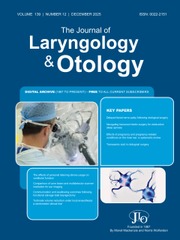No CrossRef data available.
Article contents
Otosclerosis and Tinnitus
Published online by Cambridge University Press: 27 March 2025
Extract
I present to you the temporal bones of a patient with a mixed type hearing loss. In his right ear, he had stapedial fixation; he had a conductive hearing loss, and he had some sensori-neural loss. In the opposite (left) ear, he had an almost symmetrical pathological lesion, but there was no stapedial fixation. The stapes on this side was still loose and the patient did not have any conductive loss; the loss was entirely sensori-neural. I guess this set of temporal bones goes as far as any that I have seen to prove the theory that there is such a thing a cochlear otosclerosis. And most of us do believe there is such a thing as cochlear otosclerosis; and although this patient did not have a conductive hearing loss, he did have otosclerosis, he did have a sensori-neural hearing loss only, and he did have tinnitus. So here would be a patient with tinnitus due to a sensori-neural hearing loss only, presumably due to otosclerosis, that might be amenable to some type of therapy such as Sodium Fluoride.
- Type
- Session IV—Treatment (Moderator: Jack L. Pulec)
- Information
- The Journal of Laryngology & Otology , Volume 95 , Issue S4: Proceedings of the First International Tinnitus Seminar (New York, 8-9 June, 1979) , September 1981 , pp. 149 - 150
- Copyright
- Copyright © JLO (1984) Limited 1981


